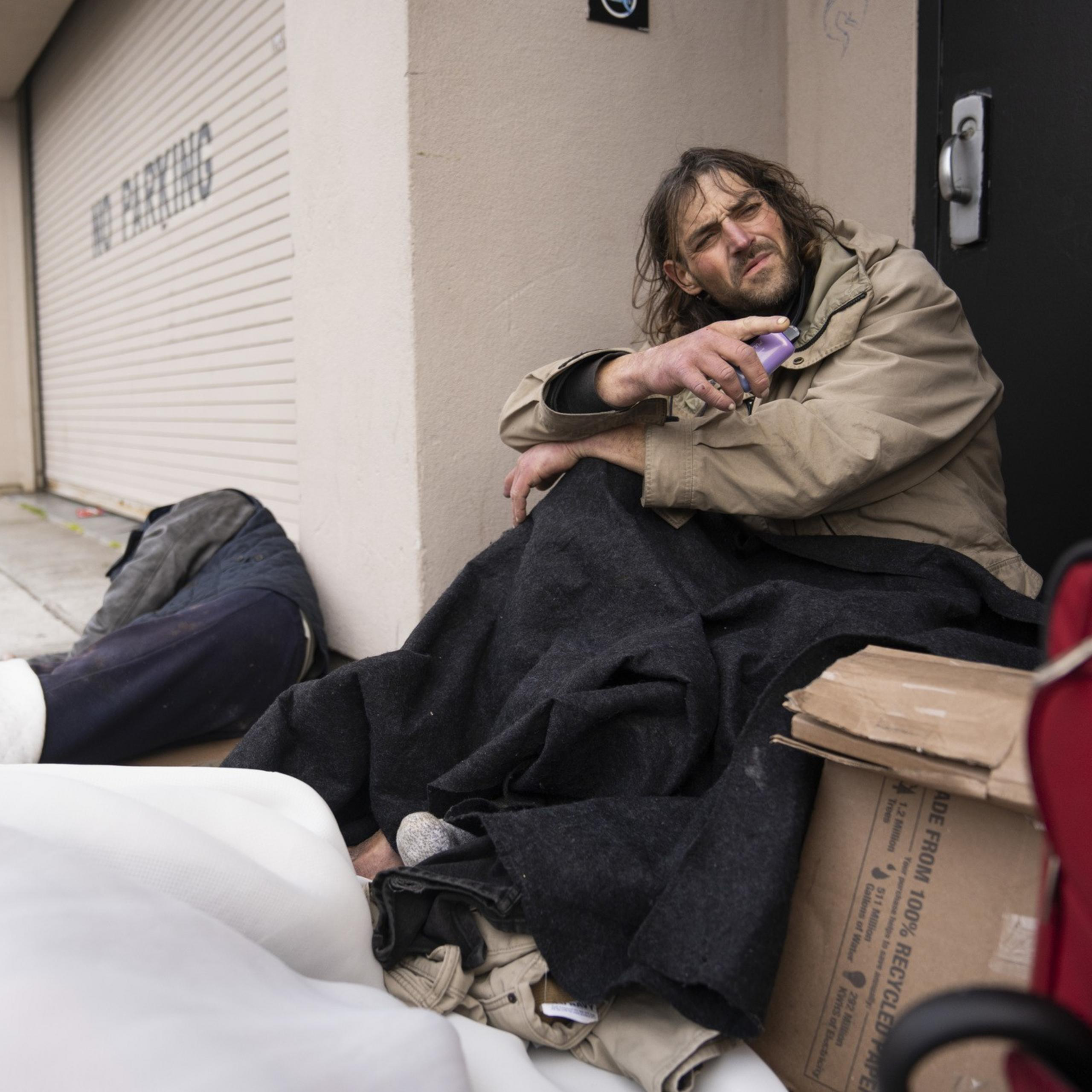Rudy Batka never learned to read or write. With a lingering infection in his hip, he can hardly walk either. He’s homeless and rarely travels far from San Francisco’s troubled Sixth Street corridor, where he buys his drugs.
Roughly 2,800 miles away in Hernando County, Florida, his mother, Mildred Batka, hasn’t heard from him in more than a year. In her backyard, she keeps a trailer with a bed inside — just in case he returns home one day.
“Is he eating?” Mildred asked The Standard by phone. “I always thought the worst, that I would have to go to California to pick up his ashes. … I can’t imagine how he’s living.”
Rudy is just one of potentially thousands of people who have moved to San Francisco without housing, in what the city says is a growing phenomenon.
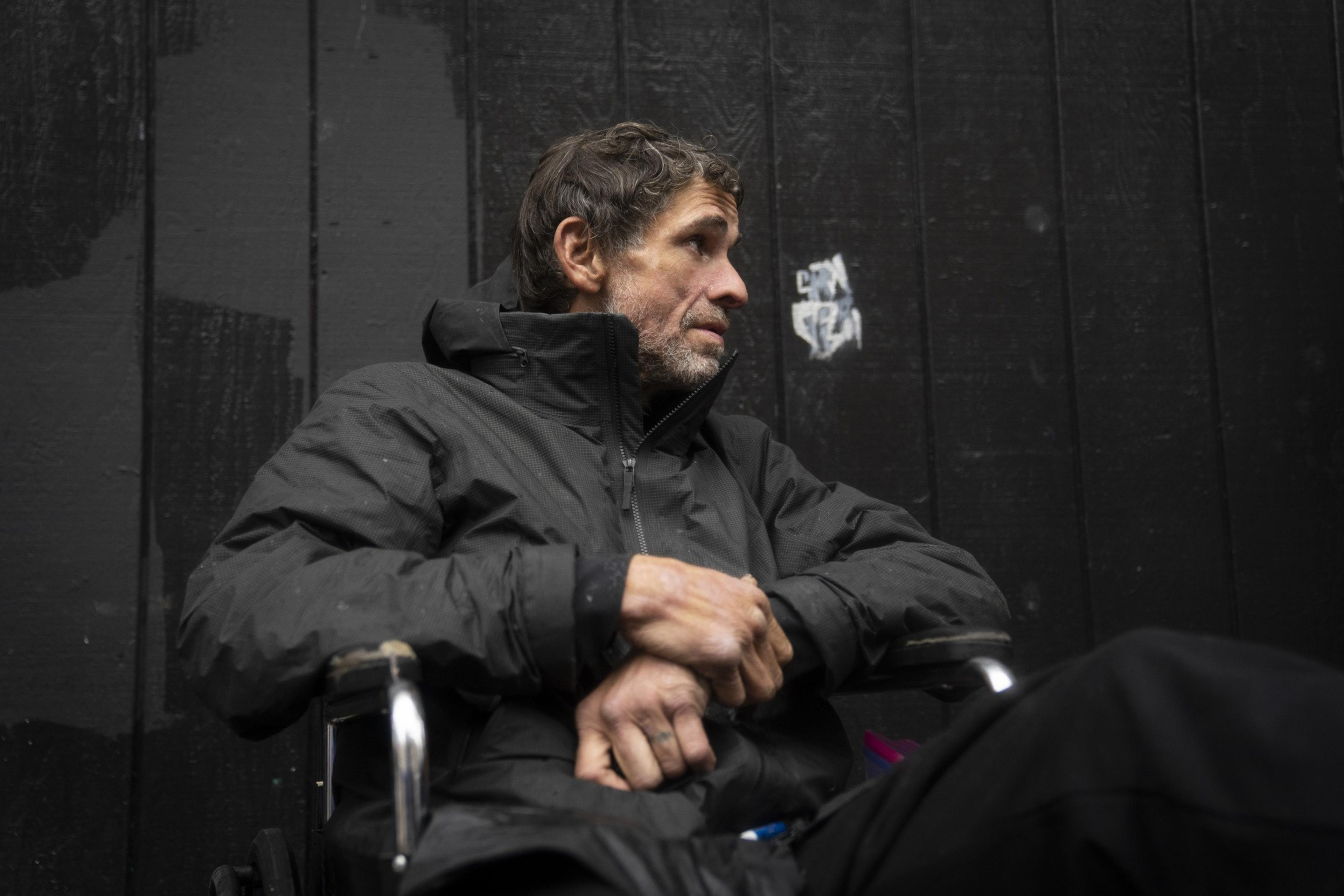
The mild climate, multitude of social services, and culture of acceptance have long made San Francisco a destination for those on the margins of society. But the most recent Point in Time count, a controversial method for measuring the homeless population, shows that the trend of unhoused people moving to the city has accelerated in the past two years.
Of 952 homeless people surveyed, 20% said they were previously housed in another Bay Area county, 10% were from another California county, and 11% were from out of state. Meanwhile, the share of people who became homeless while living in the city has dropped to 59% from 71% in 2022.
Mayor Daniel Lurie has made the issue a linchpin of his administration, promising to crack down on “drug tourism” since the early days of his campaign.
Kunal Modi, Lurie’s homelessness chief, highlighted the data in an X post (opens in new tab) Jan. 29, before starting work in the mayor’s office. He vowed to expand the city’s homeless relocation programs and push other counties to build more shelter and housing.
“Our residents are generous,” Modi wrote. “But it’s not sustainable for SF to be the services hub for the region.”
In interviews with The Standard, people who have traveled to San Francisco without housing said they did so in search of job opportunities or support from the city’s vast social services network. Among them are immigrant families seeking sanctuary or LGBTQ people escaping persecution. Others say they were seeking refuge from harsher drug laws elsewhere. Many describe a complex tale of hardship that stems from some combination of these factors.
Batka, who struggled with drugs and homelessness for years prior to moving to California, says he came to the state 10 years ago to work for a carnival in Fair Oaks. He landed housing in Sacramento. But two years later, he suffered a severe injury to his hip. Unable to walk, he lost his job, was evicted from his apartment, and moved to San Francisco in need of help.
“It’s just been a downward spiral, one thing after another,” Batka said. “I need some kind of guidance. Tell me what I need to do, and I’ll do it.”
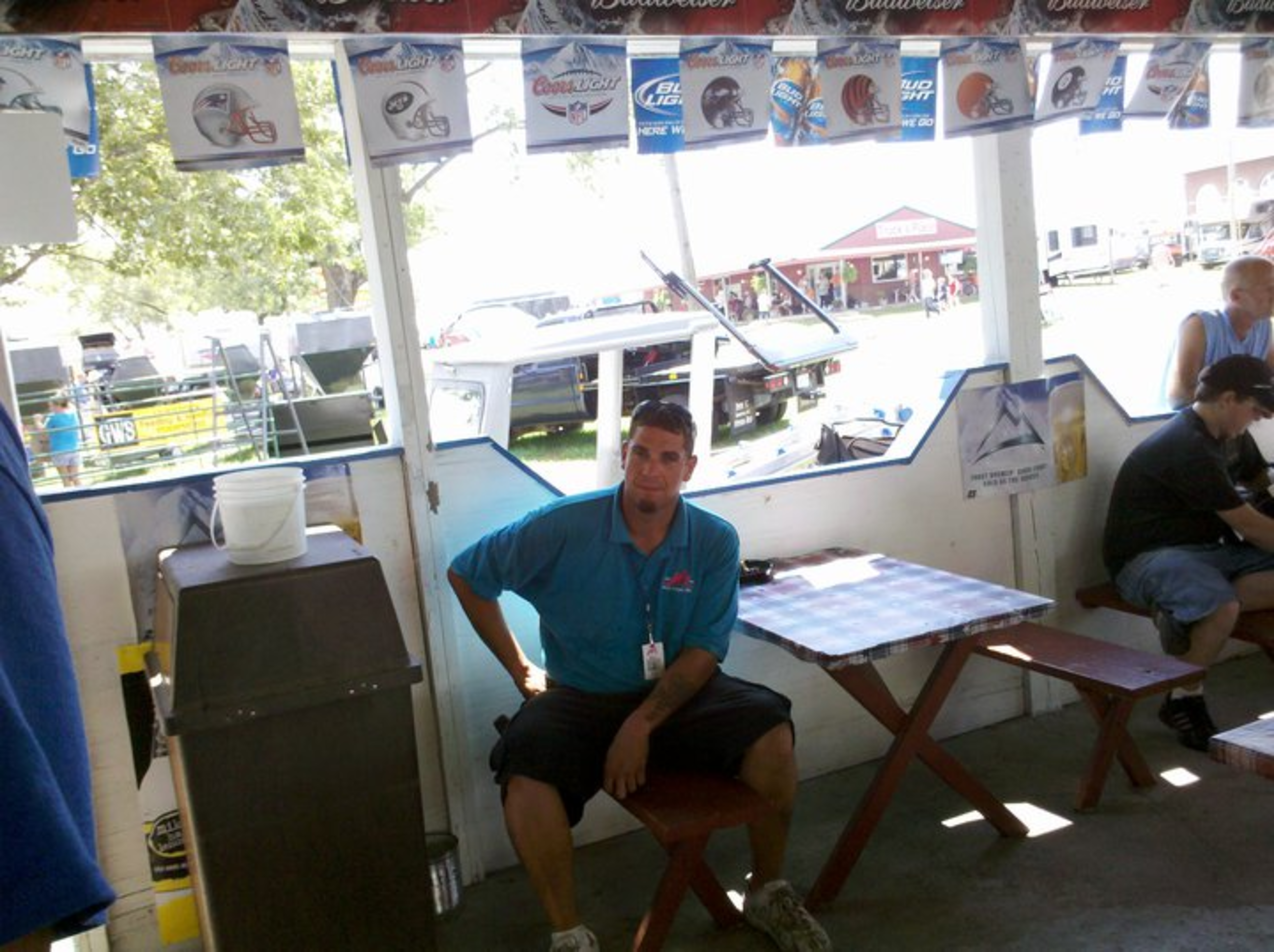
‘He can’t get away’
Living on the streets of the Mission, Ryan Ferris, 41, moved to California a decade ago from upstate New York to work in the cannabis industry. He was making good money while living in Santa Cruz and recalls routinely visiting San Francisco to party and sell weed. But one day in 2019, he accidentally used cocaine that was laced with fentanyl, he said. He was instantly hooked.
“It filled a void. I never knew how deep it was,” Ferris said. “It brought my whole life down so fast.”

In 2021, his dad visited the city in an attempt to save Ryan from addiction, driving him 2,900 miles back to their home in Poughkeepsie. While riding shotgun, Ryan continued using fentanyl to avoid withdrawals. At some point, police pulled over the car and confiscated his drugs.
“It was hell when [his dad] drove with him from California,” said Ryan’s mother, Terri Ferris. “I was getting calls constantly.”
By the time they arrived in New York, Ryan refused to enter rehab, Terri said. A few months later, he bought a one-way plane ticket back to San Francisco.
“Fentanyl really has a hold on him. He can’t get away,” Terri said. “We all love him. I hope he knows that.”
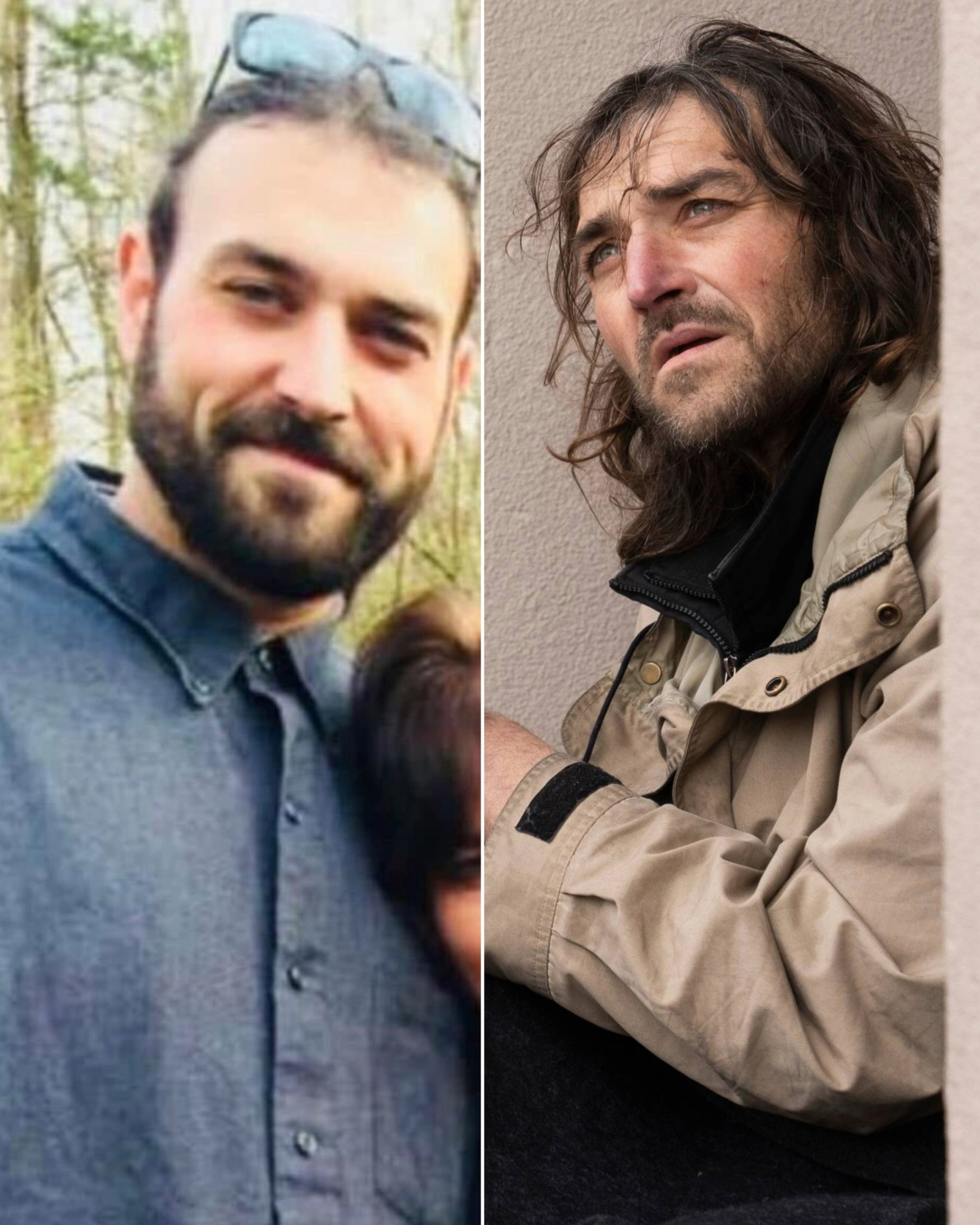
On a recent Monday morning, when The Standard found Ferris on Julian Street, gauze bandages were falling off his swollen legs. The Standard offered to connect him to his family via phone but he declined.
Two men lay on the ground next to him: William Humphries, who is from Alabama, and Anthony Vega, from Salinas. Humphries said he became homeless during the pandemic after losing his job in Mendocino. In an online forum (opens in new tab) roughly two years ago, he begged for a stranger to take him back home.
“The longer I am in Cali, the longer any type of better life is going to be delayed,” the post said.
‘I didn’t make you homeless’
Battling the disease of addiction is a long and unrelenting process. But the patience of San Franciscans, who are often compelled to witness the tragedy of the city’s drug crisis, is wearing thin.
As Ferris told his life story and Humphries slept next to him, April Reid, who lives in the building they were camped in front of, walked up and demanded they leave. She said they were blocking the fire escape, and she didn’t want her kids to see them using drugs.
When the group was slow to get up, Reid became aggressive. She wielded a sock with a heavy lock inside and threatened to beat Ferris unless he moved.
“Don’t nobody want to see this shit,” Reid yelled as she threw the men’s items into the street. “This ain’t no homeless encampment. Go in the alley like everyone else.”
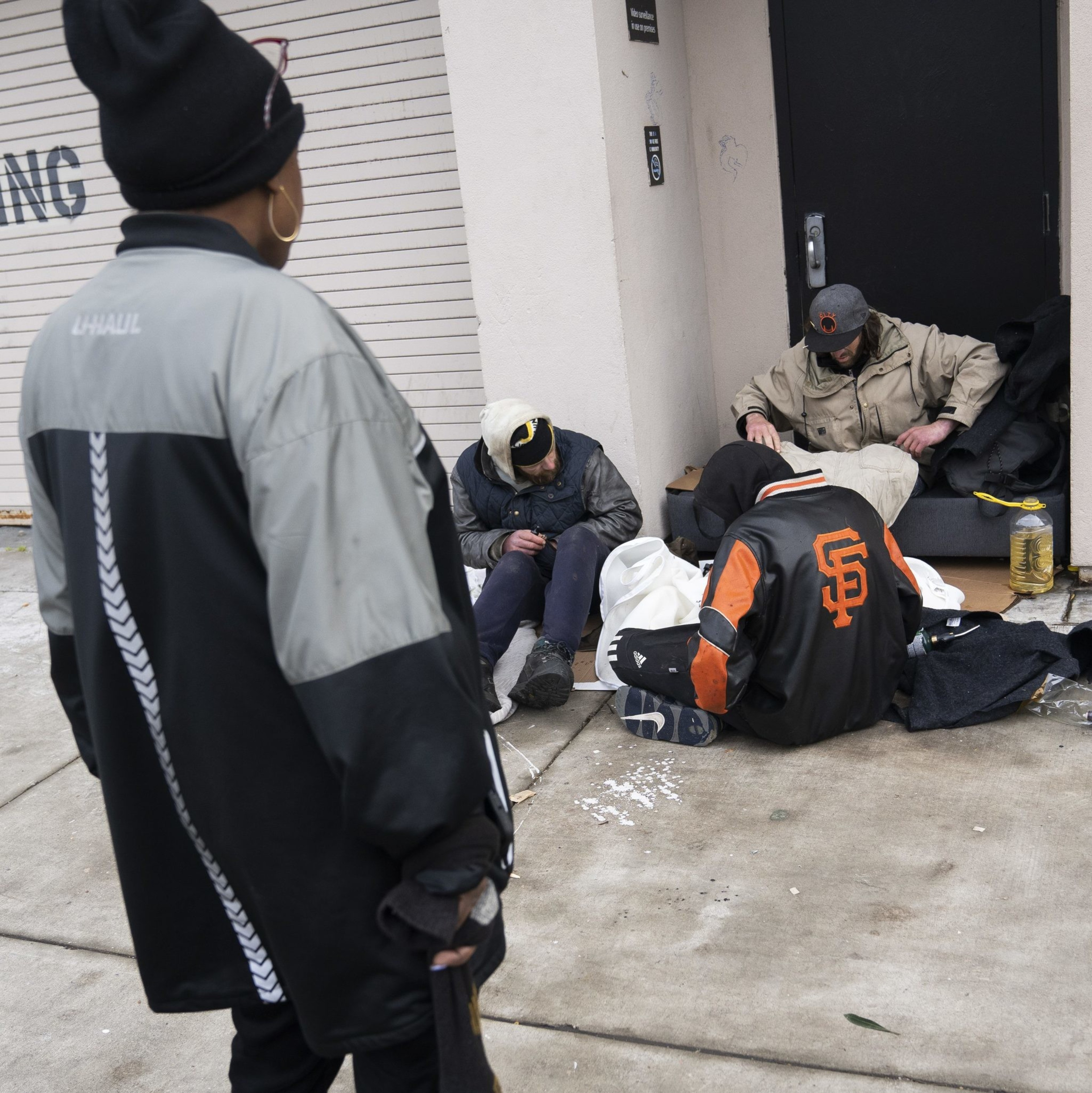
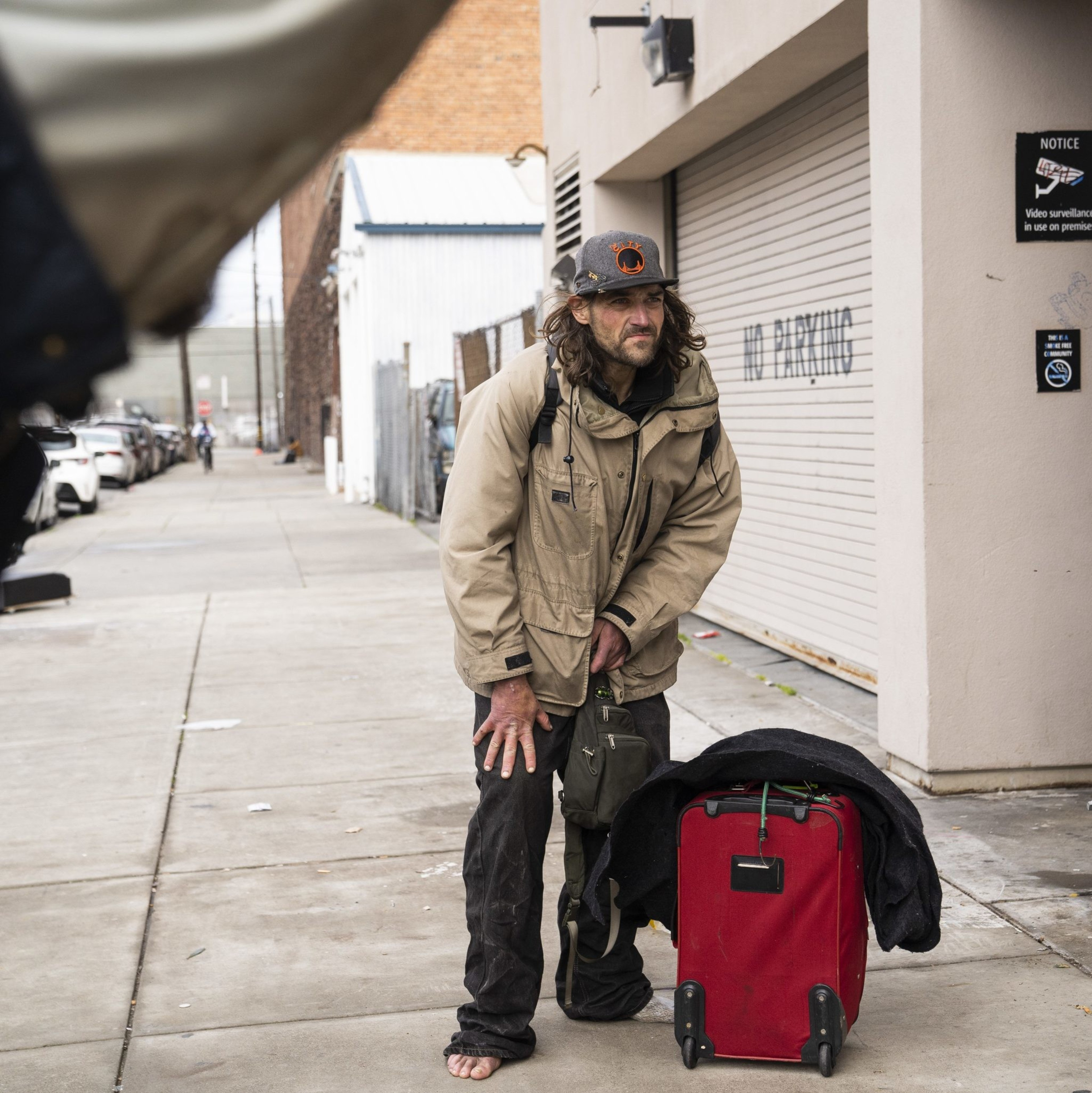
As Ferris folded his clothes into a bag, he remarked that someone had stolen his shoes while he was asleep. He started to limp away in his socks. Suddenly, Reid’s tone softened.
“What size shoe do you wear?” she asked.
Size 13, Ferris responded.
Reid went to her apartment and returned with a new pair of Jordans, a pair of socks, and water for the three men.
“I didn’t make you homeless, I just don’t want you in my space,” Reid told them.
“From now on I’ll stay away from here,” Ferris conceded. “I’ll tell other people not to sleep there too.”
The group relocated down the block. By the next day, another person was sleeping in front of the fire escape.


The journey home
Growing tensions over street conditions have raised the stakes for Lurie, who campaigned on promises of solving unsheltered homelessness.
One of Lurie’s stated goals is to expand Journey Home, which launched in September 2023 and sends homeless people back to places they previously lived with a city-funded bus ticket. The city’s previous bus program, Homeward Bound, had relocated more than 13,000 homeless people since 2005.
However, the program isn’t a silver bullet.

The Bay Area remains one of the country’s most expensive places to live, and many working-class jobs have disappeared from San Francisco over several decades, according to census data. A majority of the city’s homeless people report that they previously had housing in the city, and the most common reason given for homelessness is job loss.
San Francisco has attracted people — rich and poor — in search of opportunity and refuge since gold miners parked their caravans here in the 1800s. Politicians have blamed the city’s ills on outsiders since before the 1967 Summer of Love, which famously attracted thousands of hippies.
Last year, San Francisco received a surge of migrants from Central and South America, many of whom were escaping violence in their home countries and arrived to the city with just the clothes on their backs. While local leaders recently reaffirmed the city’s sanctuary status, resources for low income immigrants remain insufficient, according to service providers.
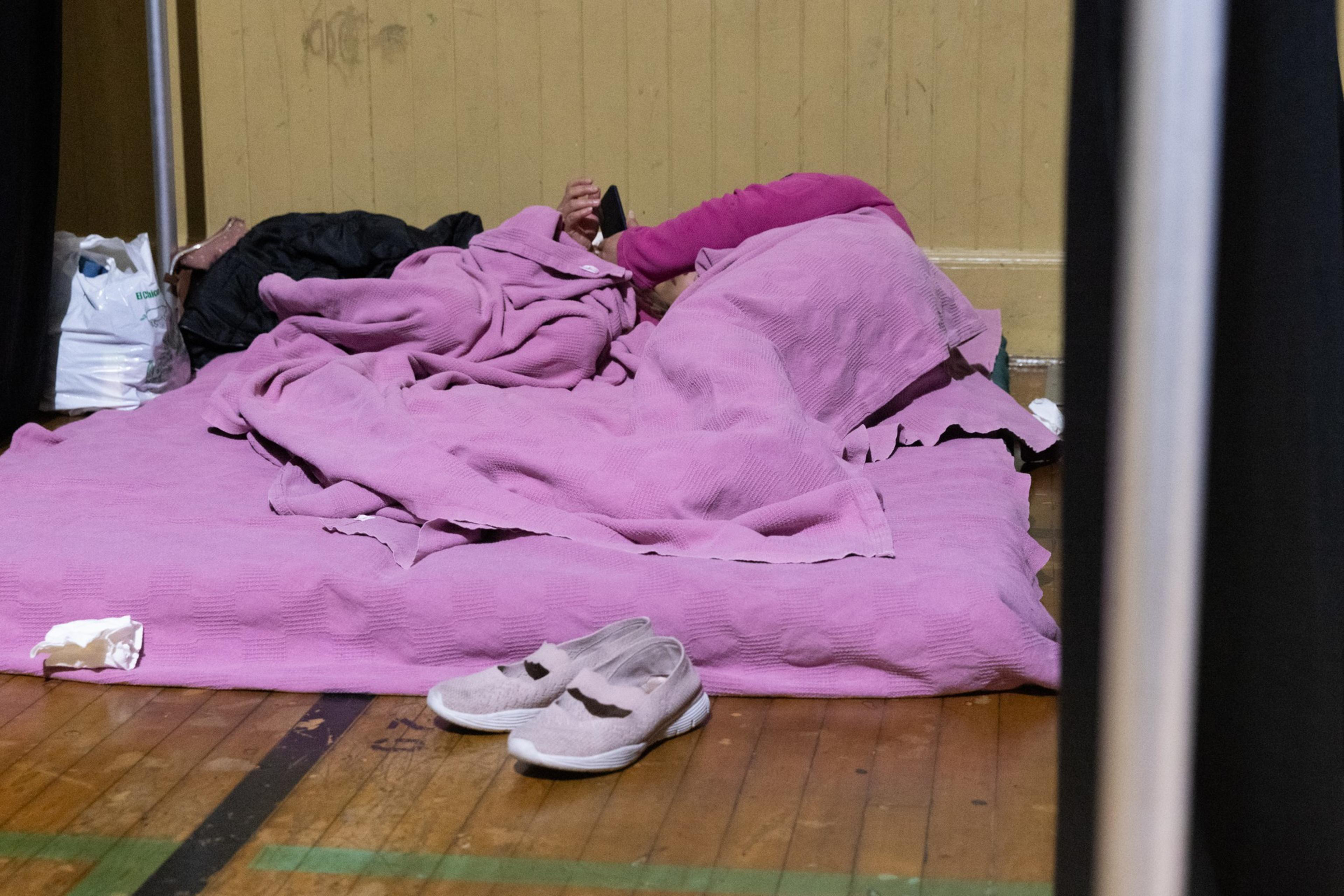
Homeless advocates argue that San Francisco’s relocation programs, and the rhetoric that often accompanies them, are used to ostracize homeless people and absolve local leaders — who preside over one of the wealthiest cities (opens in new tab) in the world — of responsibility.
“They know what the problem is,” said Pierre Byrd, who is homeless and from the Fillmore neighborhood. “It’s too damn expensive.”
The Journey Home program has proved difficult to scale in recent years. In August, then-Mayor London Breed ordered all city workers who interact with homeless people to offer bus tickets out of town before any other services. However, the number of bus tickets issued did not increase following her directive.
Some experts contend the initiative is impossible to expand because there are a limited number of people who want to return home.
Several people living on the streets told The Standard they were unsure if they had a home to return to.

Journey Home doesn’t proactively connect people with loved ones, only requiring perfunctory phone calls to confirm clients have ties to their preferred destination. If they can provide some other type of proof, clients aren’t required to contact a relative or friend before being relocated.
There are also obvious issues in placing people with severe drug addiction or mental illness on a multi-day bus ride. Journey Home requires participants to refrain from using drugs or alcohol on the bus, an agreement that is nearly impossible to keep for people in the throes of withdrawal.
Even if a person does accept a bus ticket, there is a question of what happens next.
Back in Poughkeepsie, effective drug and mental health treatment is difficult to find, said Terri, who reasoned that her son should complete rehab in San Francisco — or risk a repeat of the family’s last attempt to extract him from the city.
The life Ryan once knew back home no longer exists, she added. He’s burned bridges with most of his friends, who have started families and built careers. His brother Zach now has a daughter.
Still, she holds out hope.
“When he decides that he’s ready, everybody in the family is here to support him,” Terri said. “I know that it’s not him — it’s the addiction.”
